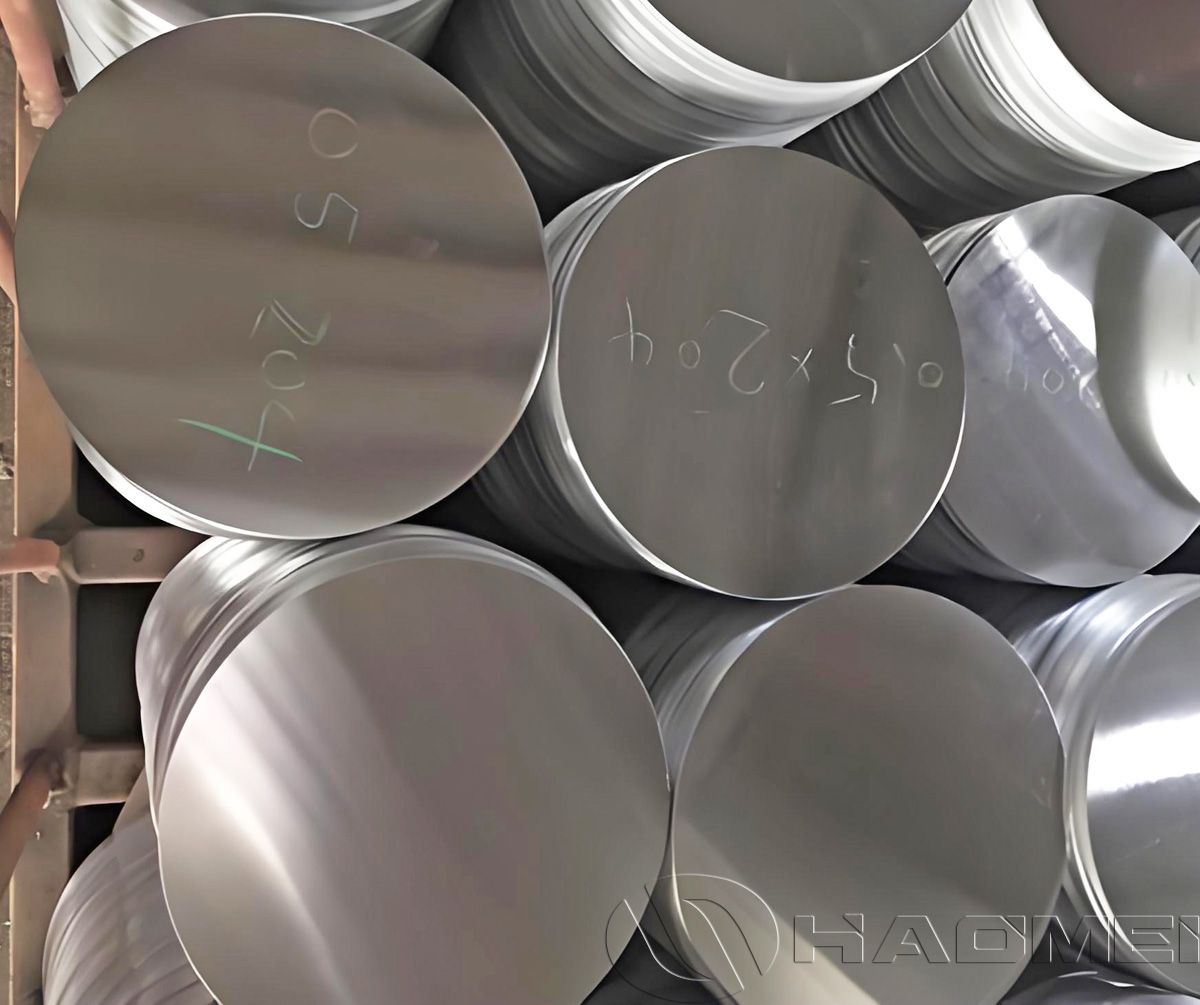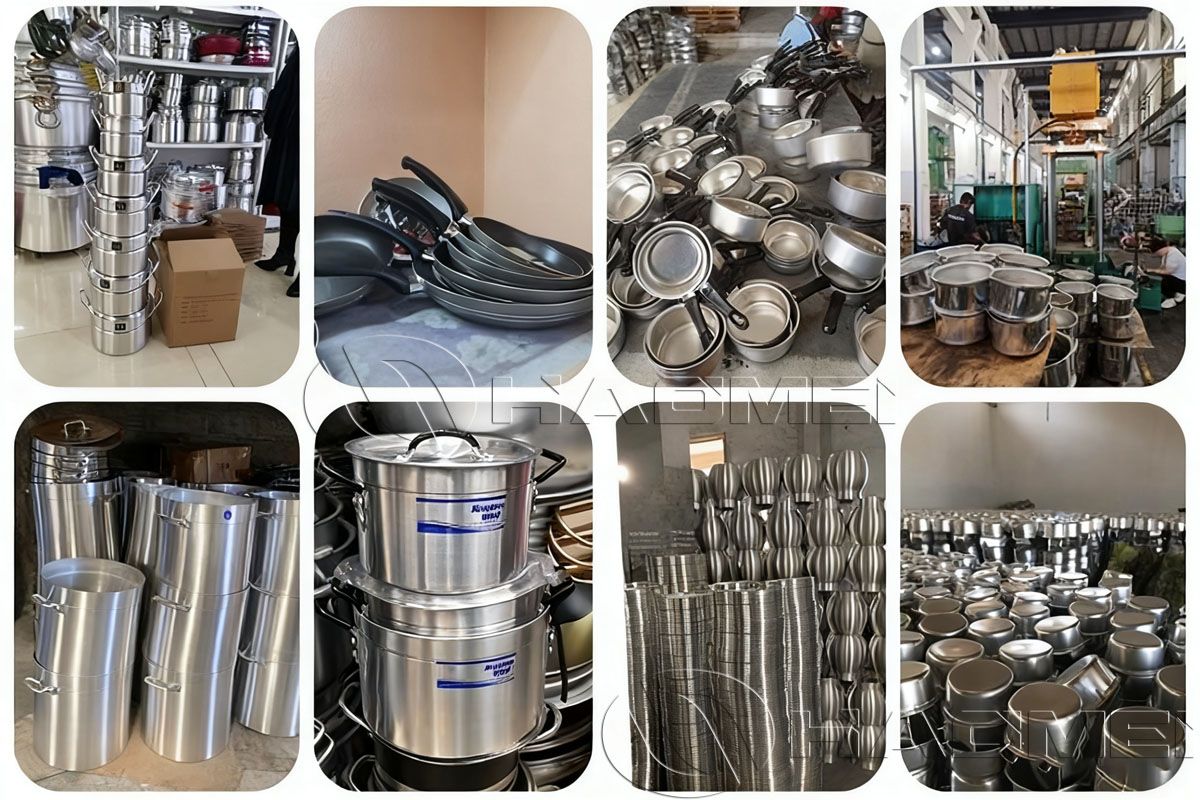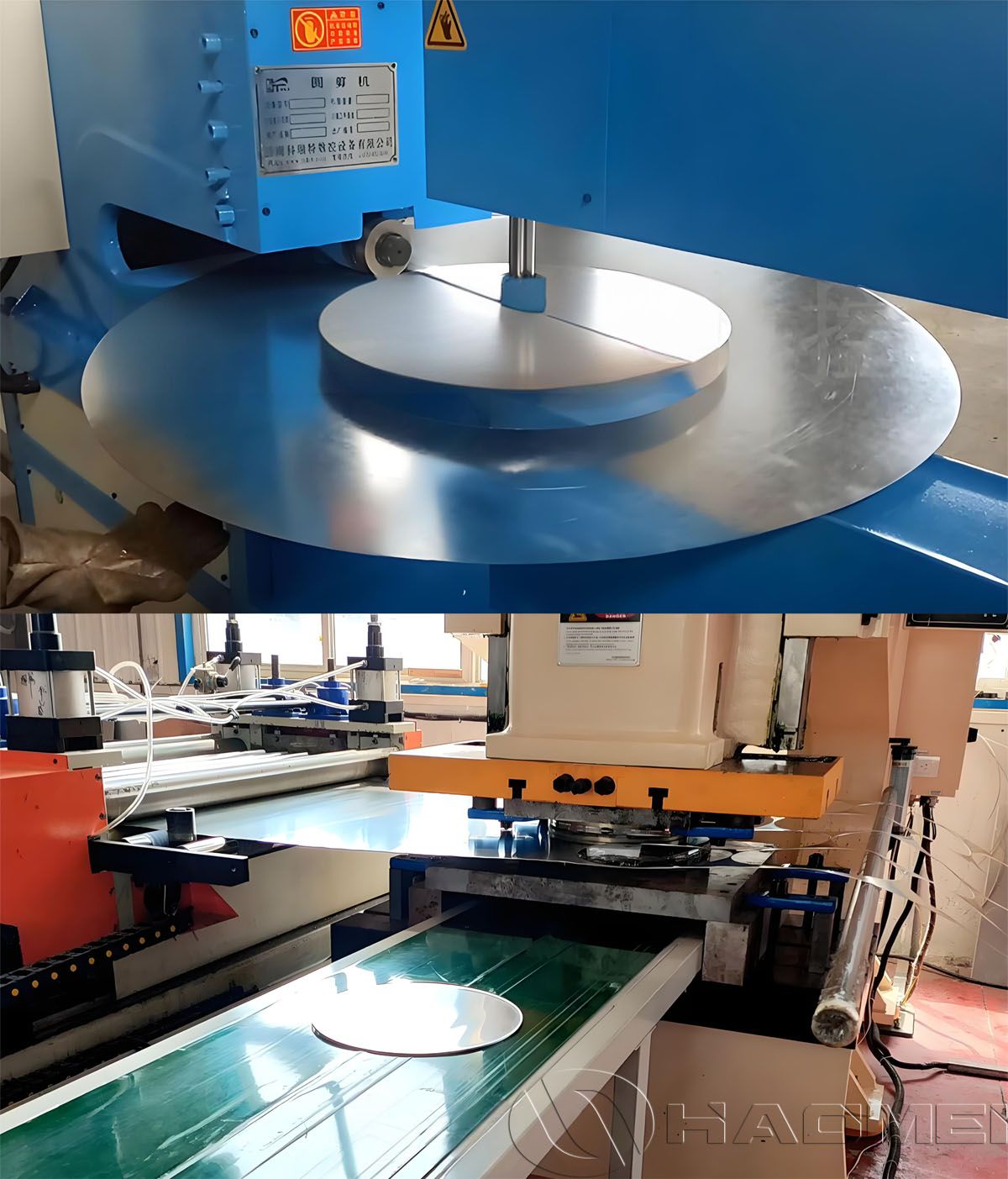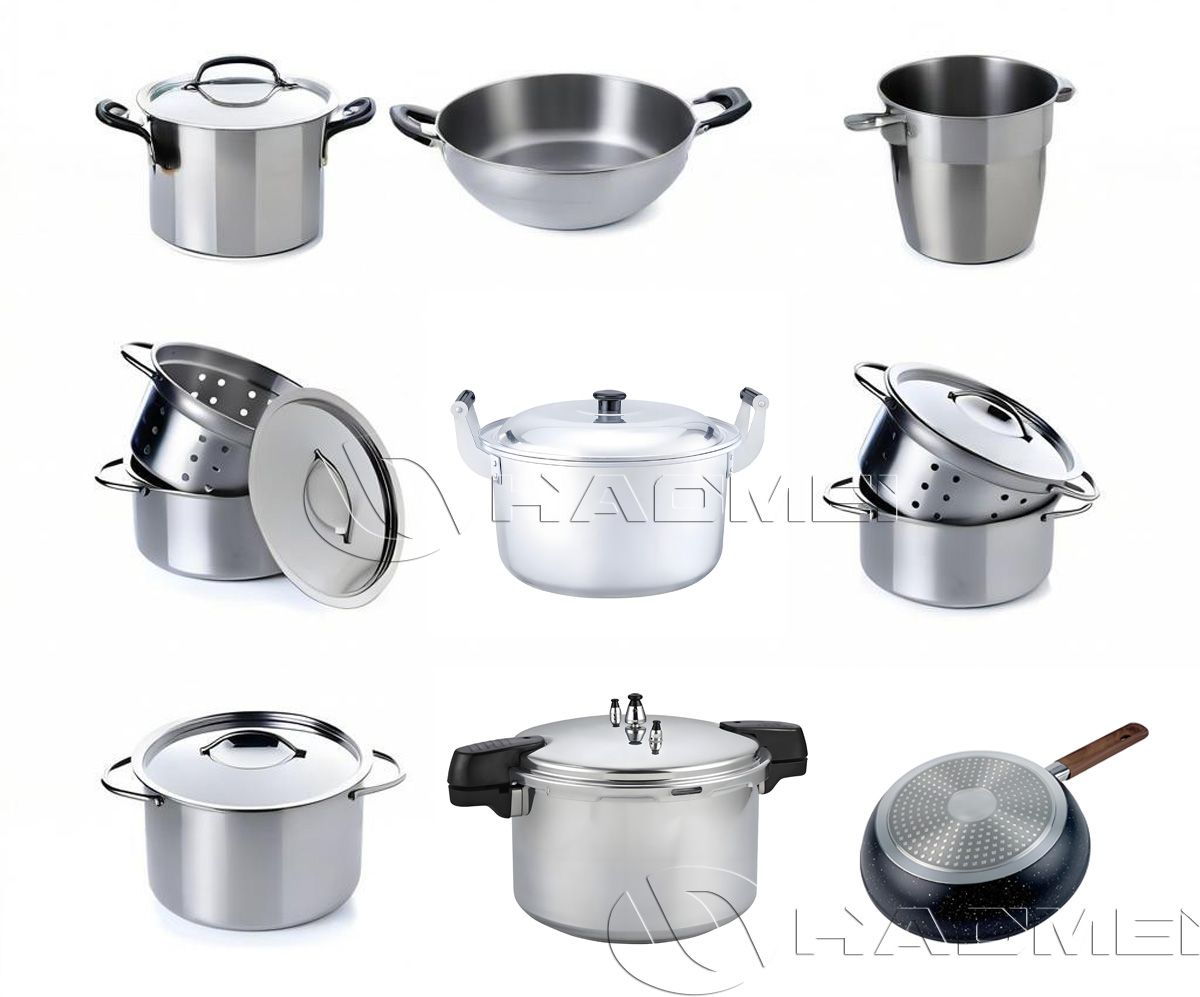
 No.14 Waihuan Road, CBD, Zhengzhou, China
No.14 Waihuan Road, CBD, Zhengzhou, China
 +86-18703635966
+86-18703635966

 No.14 Waihuan Road, CBD, Zhengzhou, China
No.14 Waihuan Road, CBD, Zhengzhou, China
 +86-18703635966
+86-18703635966
In the modern cookware manufacturing industry, aluminum is widely used for producing pots, frying pans, woks, milk pans, and pressure cookers because of its excellent thermal conductivity, lightweight properties, and good formability.
Cookware requires metals with superior thermal conductivity and chemical stability, as these factors affect both the cooking performance and the taste of food. Aluminum is an ideal choice-it offers outstanding heat transfer, doesn’t rust, and resists many forms of corrosion. As a result, aluminum discs are one of the most commonly used metals in cookware production.
HAOMEI Aluminum's 1050 aluminum circles, with a high purity of ≥99.5%, excellent ductility, and cost-effectiveness, have become one of the mainstream materials for cookware manufacturing.

1. Stretched Aluminum Circle Products
Using rotary stamping technology, 1050 aluminum circle discs-because of their soft texture-are often alloyed with small amounts of magnesium, copper, or bronze to improve strength. Typical applications include baking pans, juice pans, cake/muffin molds, stock pots, steam pots, pasta pots, and drawn frying pans.
2. Cast Aluminum Circle Products
These have thicker walls than stretched discs and are suitable for applications requiring structural strength, such as stock pots, Dutch ovens, and heavy-duty bakeware. Due to microscopic porosity inherent to casting, their thermal conductivity is slightly lower than that of stretched aluminum.
3. Anodized Aluminum Circle Products
Anodizing creates a natural aluminum oxide layer with high hardness and chemical stability. These discs are mainly used for juice pots, stew pots, baking trays, and Dutch ovens, combining durability with food safety.
(1) Selecting the right 1050 aluminum blank
Ensure that the diameter and thickness of the aluminum disc meet the specifications for the desired cookware. 1050 aluminum is typically supplied in either annealed (O) or slightly hardened grades (such as H12 or H14). O offers the best deep-drawing properties and is suitable for deeper cookware. H14, on the other hand, offers a certain strength and is suitable for cookware requiring greater rigidity.
(2) Surface quality
The surface must be smooth, free from scratches, oil stains, or impurities. Cleaning is often performed to ensure high-quality forming and finishing.
Cookware manufacturing generally involves two main forming techniques: spinning and deep
(1) Spinning production process
The disc is fixed on the spinning machine and gradually formed into a thin-walled pot body through high-speed rotation and roller pressure. It is suitable for shallow cookware such as frying pans and frying pans, with high surface smoothness. Spinning production usually requires cold-rolled aluminum discs (also known as CC aluminum discs). Common grades are: 1050, 1060, 1100, 3003, 5052, 8011. Spinning can be divided into manual spinning and CNC spinning.
(2) Deep drawing process
The disc is placed in the stamping die and deep-drawn once or multiple times by a hydraulic or mechanical punch to produce plastic deformation or separation, thereby obtaining a part (stamping part) with a specific shape, size and performance. It is suitable for deep cookware such as milk pots, stew pots, and pressure cookers. HAOMEI Aluminum's deep-drawn high-quality aluminum discs (also known as DDQ high-quality aluminum discs) are deeply loved by customers.
The stamping production process usually requires hot-rolled aluminum discs or DC aluminum discs. Common grades include 1050, 1060, 1100, and 3003.
After forming, excess edges and uneven rims are trimmed using trimming machines. The edges are polished smooth in preparation for finishing processes.
Depending on the cookware’s purpose, various surface treatments are applied:
Anodizing: Improves corrosion resistance, surface hardness, and can add decorative colors.
Non-stick coating: Common for frying pans and woks.
Polishing: Enhances surface brightness and facilitates cleaning.
Metal or plastic handles are fixed to the pot body by welding or riveting, ensuring durability and an attractive appearance.
Finished cookware is checked for dimensions, surface finish, and strength before being packed and shipped to market.
 How do you cut aluminum sheets into aluminum blanks?
How do you cut aluminum sheets into aluminum blanks?A circular shear (or plate shear) uses two disc-shaped shears. Shearing is achieved by adjusting the shear axis' position and the sheet's angle. The aluminum sheet is first cut into small square pieces and then gradually drawn into round shapes. This process is slow and prone to burring on the edges, making it more suitable for small-batch production, especially for large aluminum discs with diameters over 800mm.
A die-stamping machine (or rounding machine) utilizes a fully automated, integrated aluminum circle unwinding and blanking production line. It stamps the aluminum discs directly from the raw aluminum coil, eliminating intermediate steps like shearing and slitting. This significantly improves production efficiency and material utilization (over 80%) and significantly shortens lead times. It is suitable for large-scale production of aluminum discs with diameters ranging from 100mm to 1200mm.

HAOMEI Aluminum's aluminum rounds primarily include Series 1, Series 3, Series 5, Series 4, and Series 8 rounds. The most commonly used aluminum grades include 1050, 1060, 1100, 1200, 3003, 5052, and 8011. Common finishes include O, H12, H14, H16, and H18.
1050 aluminum rounds are produced via hot or cold rolling. Hot-rolled rounds are suitable for deep-drawing kitchenware, with a deep-drawing ratio of 1.8 or higher. Cold-rolled rounds are suitable for subsequent spinning processes.
1050-O: Fully annealed, softest temper, ideal for complex deep drawing.
1050 H12/H22: 1/4 hard temper.
1050 H14: Half-hard, suitable for cookware requiring rigidity.
1050 H18: Full hard, cold rolled without annealing.
Users can choose 1050 aluminum circles with different tempering states according to their needs. For example, a pot lid needs to be in H12 or H14 state; an aluminum kettle or aluminum teapot needs to be in soft state O state or soft aluminum sheet.

As a professional aluminum circle manufacturer, HAOMEI Aluminum offers aluminum discs with thicknesses ranging from 0.3-6.0mm and diameters ranging from 10-1800mm. Our products are exported to many countries and we offer competitive prices. Direct from the manufacturer, we offer competitive prices and fast delivery. Feel free to contact us.
Copyright © 2025 By HAOMEI Aluminum CO., LTD. All Rights Reserved. Sitemap